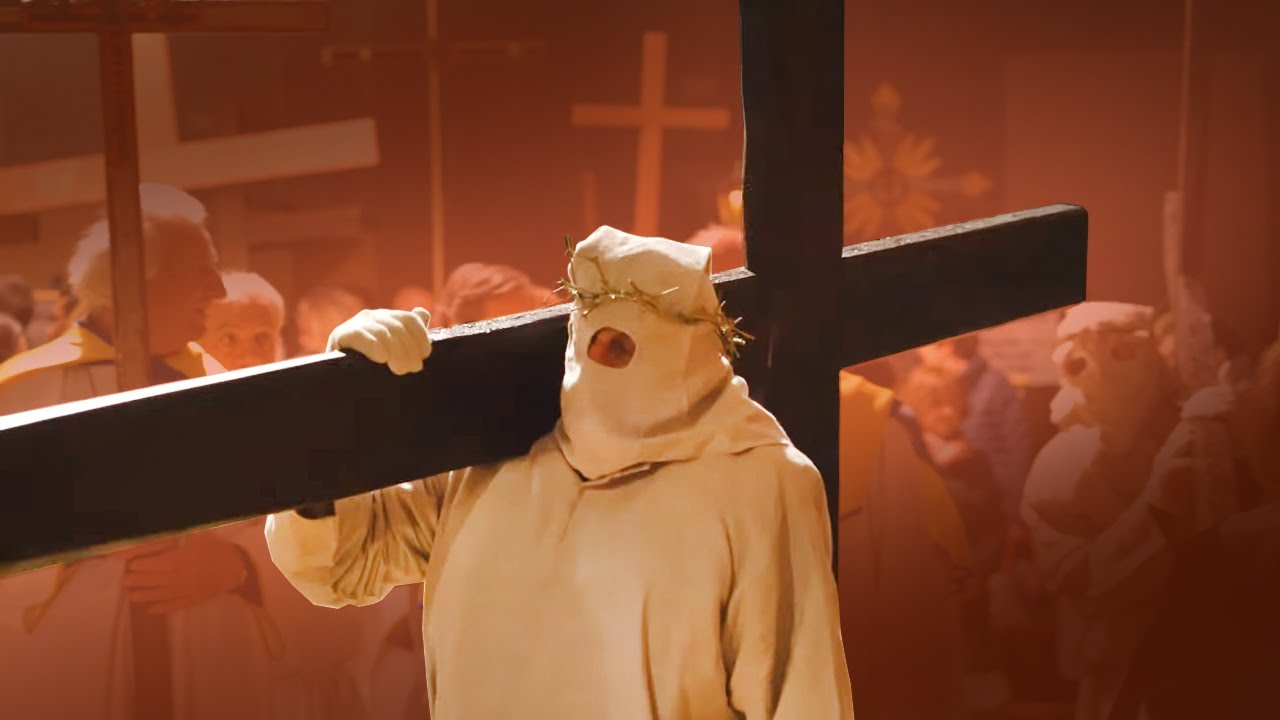Holy Week in Assisi is marked by ancient rituals, rites that are observed in the major churches, monasteries and convents throughout the town. Here, bells normally ring on the hour and half hour from a number of bell towers but during this week there have been extra ringings. The observance of the Easter triduum begins officially on Thursday with the "excavation" of the crucified Christ at the Cathedral of San Rufino and its transport down the long and narrow road to the Basilica of San Francesco. The town comes out of the sleep of Winter and becomes alive with people. Families are free for the next four days as the observance of Easter spills into Monday, "Pasquillina". The town center, the Comune, is noisy, bustling with people of all ages, none of which seem too sorrowful as they foresee the holy and sad days ahead in accordance with the Christian tenets of faith.
So, we made our own preparations, taking full advantage of a beautiful Friday before Easter, known as Venerdi Santo or "Holy Friday", and we walked the beautiful 2.2 km paved path that bridges ancient Assisi with the newer Santa Maria degli Angeli. It's a lovely walk, especially on a sunny Spring morning. Joe likes it because it's all downhill and then it flattens as we near the train station and the elegant (not kidding) McDonalds (they have an espresso bar). Our goal was to find a "torta di Pasqua" and a few other grocery store items in town and, of course, to experience some very darned great slices of pizza for lunch. Both missions accomplished, we visited the beautiful basilica which houses the sacred Porziuncola, the tiny thirteenth century church where St Francis started his work of rebuilding in accordance with his message from God. It's beautiful and very sacred to those who follow Francis. Our torta, purchased at a small local alimentary, ready for the traditional Easter breakfast.
A bus ride back up to our part of Assisi (filled with noisy Italian teenage scouts on holiday) and a stroll back to our apartment......after stopping for an aperitivo in the piazza. Dinner (I'm using recipes from my dear friend, Letizia Mattiacci's cookbooks) and then, after a glorious sunset, we walked back up to the Comune in anticipation of the most sacred of Easter preparations, the "Processione del Cristo Morto" or "the Dead Christ Procession". An ancient ritual, as ancient and as moving as it could possibly be.
The Piazza del Comune transforms itself from a noisy and vibrant town square, into a dark and silent gathering as all of the lights are turned off and slowly, the procession begins. In the distance, the sole thump of a big drum, sounding almost canon-like, is heard, repeated every few minutes as the candlelight procession of hundreds of people, members of the churches and confraternities and their families, slowly make their way through the narrow and otherwise silent streets that wind their way from the top of the town to the bottom. The participants, dressed according to their individual confraternity, include in their grouping a person, barefooted and somberly attired, carrying a large and what appears to be heavy, cross. It's eerie to observe. This, of course, replicating the route traveled by Christ during the passion. Slowly, silently, somberly. The most moving sight, one that left me speechless and in awe. Finally, the last group carries a huge statue of the Blessed Mother which, because of its weight, takes a huge team of men. This is no easy walk through Assisi. Thump, thump, silence. The procession continues down the hill, along the Via de San Francesco, until the arrival at the Basilica where the cross holding Christ is met. The union of sorrowful mother with her son. And then, the return of both, now uphill, to San Rufino.
At the end of the day, Venerdi Santo, I can't help but put the pieces of our day of walking together. The walk down to Santa Maria is along a modern-paved path. At the start of the walk, in excess of four thousand bricks make up the first of a series of memorials. The start of the path, one I have traversed many times, consists of bricks bearing the names and hometowns of victims of the World Trade Center. Looking down at the names becomes a ritual in itself, a memorial to another kind of suffering and indignity. Some of the names have become familiar over the years, one especially, a young man from Barnstable Massachusetts. When I first discovered this particular brick, I photographed it, made contact with his wife and assured her that he was being remembered even here, thousands of miles from their home, in Assisi, the city of peace.
So, on this Good Friday, Venerdi Santo, passion and suffering are remembered and I am sure, always will be.





No comments:
Post a Comment
Note: Only a member of this blog may post a comment.